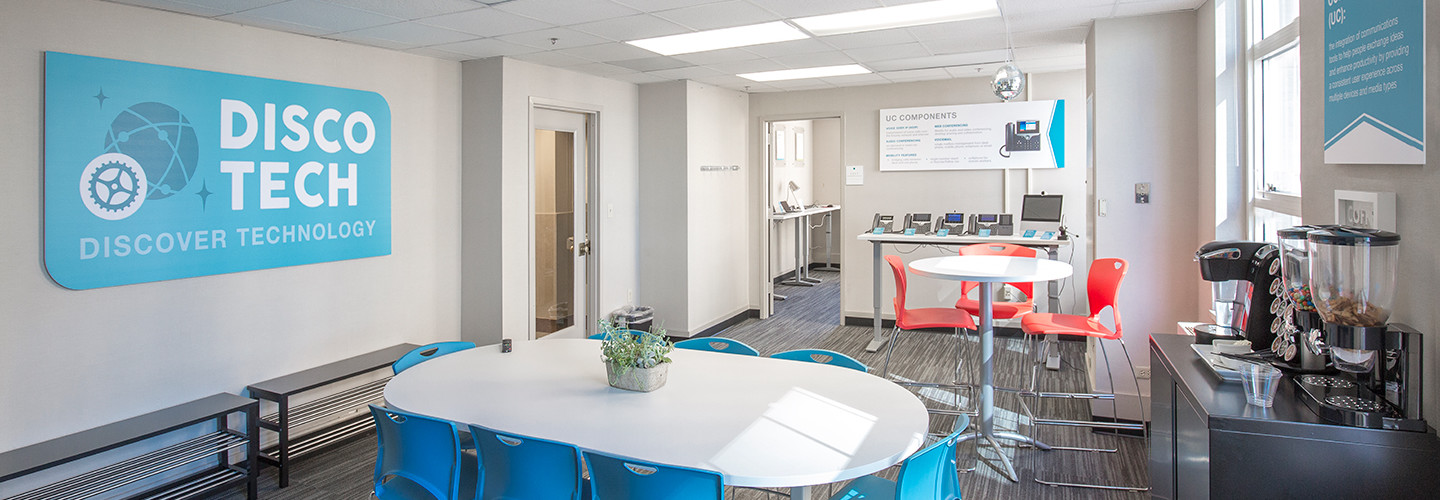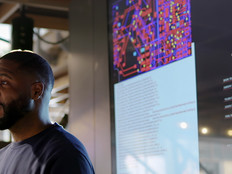Wake County's Innovation Lab Sparks Creative Solutions
Wake County, N.C., is growing like a weed. It gains an average of 63 new residents each day, which puts a lot of stress on the county’s infrastructure, transportation systems, human services and more — and requires the county government to think of innovative solutions to its problems.
Fortunately, the county has developed a platform to tackle those challenges. Last summer, the county launched an innovation lab, called Wake Innovates, designed to foster a new culture of innovative thinking across the entire county government, with technology and process innovation key components of the lab’s mission.
“Ultimately, what we’re trying to do is provide the right resources and tools, feedback and advocacy to make a culture change,” Bill Greeves, Wake County’ chief information and innovation officer, tells StateTech in an interview. “We’re not ever saying that innovation and creativity only happens within the team or happens in the innovation lab. It happens all the way across the organization. We’re trying to establish and improve the resources that will help move things along.”
While states like Georgia and Indiana have launched innovation labs, it has been rarer at the county level. Still, several counties, including San Mateo County, Calif., and Montgomery County, Md., have opened innovation labs recently to test new technologies and find novel approaches to thorny challenges for county governments.
Wake County Sets Up Lab to Spark Creative Thinking
About two years ago, the former county manager of Wake County, Jim Hartmann, spoke with Greeves about finding more creative ways to deal with the cost of operating the county government.
At the same time, Greeves says, the county was being hit with waves of disruptive technologies, including 3D printers, artificial intelligence, drones, smart speakers and augmented and virtual reality. The county government did not have the capacity or skill set dedicated to vet those new technologies.
After conducting months of research on different kinds of innovation labs, Greeves presented a proposal to Hartmann, who signed off on the idea. The lab has access to $100,000 from a recurring capital fund, and that money serves as the main source of funding for piloting new technologies and demonstrating proofs of concept. “We use those innovative efforts as test bed to prove out and validate” projects, then “use positive success metrics to drive a more formal request in the budget process,” Greeves says.
In July 2017, Wake County launched the program and had the leadership of every department come through the space for several open houses so that the innovation lab staff could explain the purpose of the lab and find out from county officials how innovation could help their departments, according to Greeves.
That quickly led to a long potential project list. “There was no shortage of work to triage,” he says. Greeves and the lab’s staff then set about prioritizing projects, a process that continues to evolve. “We have matured in the past year,” he says. “I think we have a long way to go, of course.”
Greeves says that the lab’s goal is to, in an “almost guerilla-style” manner, give everyone in county government some capacity to approach how their department operates in a different way.
Collaboration Is Central to Wake County’s Innovation Vision
The lab itself takes up a floor of a building in the county government’s downtown Raleigh campus that is being renovated. The goal is to learn from the experience at that location for the next few years, then plow those into a brand-new space in the long term.
The lab has several components. On one side of the floor is a set of four conference room “labs” that can be set aside for months at a time so that project teams can immerse themselves in the work, Greeves says. These rooms have portable white boards and monitors, as well as video-conferencing equipment.
On the other side of the building are the lab’s three main areas. One is called the Collaboratory, a dedicated, casual workspace for conferences, facilitated meanings and problem-solving discussions. It is filled with equipment and furniture that is portable and designed to be rearranged for the purposes of each meeting.
Another is the Thinkubator, a small-scale classroom used to teach cohort-style classes on various topics related to innovation, including design thinking and Microsoft’s Power BI, the county’s platform for data visualization, according to Greeves. The classes are only for about a maximum of eight people at a time, so that the people in the classes can develop relationships and reach out to each other if they have problems, he says.
The third area is the DiscoTech, short for “discovering technology,” used to introduce the county government to new technologies the county has committed to, and that will require a lot of thought and planning to change the way users work. Currently, Greeves says, the room is set up with unified communications equipment from Cisco Systems, including video-conferencing gear, mobile web conferencing and Voice over Internet Protocol phones.
The county’s telecommunications tech brings in the leadership from each department and uses a giant touchscreen monitor to demonstrate the capabilities of the new equipment, Greeves says. That allows the county to specifically tailor implementation to the needs of the business units.
Additionally, the DiscoTech is also used to explore new and disruptive technologies, like 3D printers and drones, and serves as a test lab for new types of equipment, as well as all of the different laptops and Chromebooks the county uses.
Greeves stresses that the lab is focused not just on technological innovation, but process innovation, as well.
“It’s about looking at new ways to do things and solving problems with creative methods,” he says. Yet innovation can rest heavily on a technology foundation, he adds, so the county wanted to keep that connectivity between the two. “But it is not an IT department initiative,” he says.
People Partner with Tech to Further Government Innovation
The innovation labs staff includes two “innovation partners,” a data scientist and a solutions-development director who spends three-quarters of her time on the lab’s work, plus Greeves himself, who spends about a quarter of his time on the lab.
Greeves says the innovation partners — people with backgrounds in process improvement, business analysis and project management — work with departments on problems that seem unsolvable. They try to find the root causes of the issues and work with others who might have a stake in the solutions.
For example, every other year, the county’s human resources department conducts a salary survey to determine whether the government is offering salaries to its employees that are comparable to other similarly sized governments and businesses in the area. Historically, Greeves says, it had been a “very, very manual and brutal process,” using a system designed by one vendor, and it took two weeks for a senior analyst to pull the data and conduct the analysis.
An innovation partner worked with the analyst and spent six months developing a new survey and data collection process using Microsoft Excel. Now, the process takes a single afternoon, Greeves says. “It doesn’t cost us any money aside from their time,” he says. “We didn’t have to buy a new tool. We don’t have a contract for software. And now she’s able to spend that time actually doing true data analysis, where she never even had the right data to do the data analysis before.”
The HR director says the program is “transformational” for the department’s work, Greeves says. “That’s the holy grail right there,” he says. “If you can get your major customer saying ‘transformational,’ that’s awesome.”








